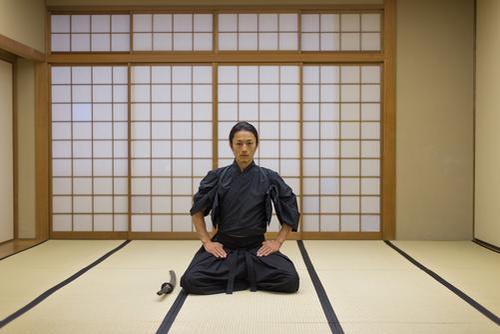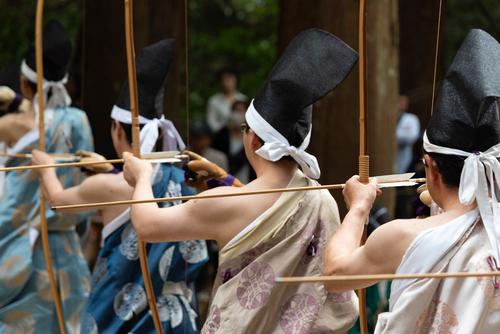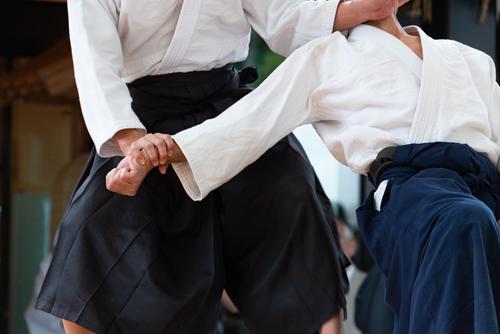Starting in 2020, judo, kendo, sumo, and other competitive sports are categorized as "martial arts," while other sports are called "sports." While many people intuitively understand that "martial arts" comes from traditional Japanese martial arts, not many can clearly explain the difference between them and "sports."
Here, we will go back to the roots of "martial arts" and "sports" and explain the clear differences between the two.
What are traditional Japanese martial arts?

Traditional Japanese "martial arts" include kendo, judo, karate, and sumo, all of which contain the word "do." "Do" means a process. It can also be described as a way of life. In other words, "martial arts" are about not only mastering techniques, but also discovering and practicing your own way of life.
What do the words in martial arts mean?
The word "budo" originates from bushido, a martial arts philosophy from the Edo period. Bushido means "the warrior's way of thinking," or the samurai spirit, and is a moral philosophy that expresses the strength to confront one's own heart. Rather than overpowering others with the power and skills acquired through training and showing off one's strength, the emphasis is on honing the inner self.
After the Meiji Restoration, "budo" evolved from kobujutsu (traditional martial arts). Kobujutsu refers to ancient Japanese swordsmanship, judo, sumo, and other disciplines, and the Meiji government considered making traditional Japanese martial arts compulsory subjects in schools. At that time, the idea of bushido, which states that mastering skills through martial arts training will help refine one's inner self and develop one's character, was added.
It is important to pursue both technique and spirit
The most important thing in martial arts is the harmony of mind, technique, and body. To hone your martial arts skills, you must not only train your body, but also your mind. Martial arts are about refining your mind, enhancing your sense of morality, and cultivating an attitude that values courtesy. This is why all ancient Japanese arts, such as sumo, kendo, judo, and naginata, begin and end with a bow.
What is the difference between martial arts and sports?

The most obvious difference between martial arts and sports is the emotional expression of winning or losing. Unlike soccer or basketball, where players embrace their teammates and erupt in joy every time they score a point, in kendo and judo even the posture after scoring an ippon is important and can determine the outcome. At the root of this lies the difference in their roots. Martial arts have their roots in the profession and work of the samurai, while sports began as play.
The roots of martial arts and sports are polar opposites
Martial arts originated from Bushido, the samurai's view of their profession. The role of the samurai who were allowed to carry swords was similar to what we would call today's riot police or police. Whenever there was a dispute, they would rush to the scene, draw their swords, and punish the bad guys or settle the matter peacefully. As it was a life-risking profession where you could either slash or be slashed, you couldn't just swing your sword around recklessly. Naturally, a high level of self-discipline was required of a samurai. Bushido is the samurai's code of conduct that governs oneself, and it has been passed down to martial arts.
On the other hand, the origin of the word "sport" is the Latin word "deportare," which means to get away from work. In other words, sports are a way to get away from work, to enjoy leisure time, or to play.
Martial arts and sports are similar but not the same, but their roots lie in the polar opposites of work and play. This is probably where the differences in how we express our emotions regarding points, wins, and losses come from.
The presence or absence of Zanshin is also a factor in the difference
In martial arts, there is a word called zanshin. It means that even after scoring a spectacular point, you should not let your guard down and be mentally prepared for the next attack. Unlike in soccer, baseball, or basketball, martial arts do not celebrate with the spectators. This is a big difference between martial arts and sports.
The need to always remain calm, not become arrogant when winning, and not be upset when losing, is a remnant of the samurai code that has led people through life-or-death situations. It is a sign of respect for an opponent who has fought fair and square. In particular, in kendo, there is a strict rule that an ippon without zanshin will be cancelled.
Types of traditional Japanese martial arts called Budo

Japan's traditional athletic culture known as martial arts consists of nine types: kendo, judo, kyudo, sumo, naginata, karate, shorinji kempo, aikido, and juken-do. In all of these disciplines, the training of mind, technique, and body is considered to be one and the same. In other words, honing technique and honing the mind are synonymous, and they are a path to character development that enhances morality and cultivates an attitude of respect for etiquette.
Here, we will focus on two of the nine martial arts, judo and kendo, and introduce each of them.
About Martial Arts in Judo
Judo is a martial art that developed from the ancient martial art of Jujutsu. Winners are decided by competing in throwing techniques, pinning techniques, and striking techniques. In Judo, there are times when a smaller athlete competes against a larger athlete, and the smaller athlete can sometimes win by skillfully using the strength of the larger athlete. In such cases, the saying "soft overcomes hard" is used. Strength that does not rely solely on physical strength is required. That is the martial art of Judo.
About martial arts in kendo
Originally, kendo was the path that samurai took to learn the principles of the sword. This path was systematized and transformed into the athletic sport of today's kendo, in which participants wear protective gear and strike each other with bamboo swords. The most prominent example of the martial arts spirit in kendo is the cancellation of a point decision due to the presence or absence of zanshin.
summary
We have explained the difference between "martial arts" and "sports" by tracing their etymologies and roots. It goes without saying that character is formed through the training process in sports other than "martial arts." However, "martial arts" add spirituality to this process, leading to heights that transcend victory and defeat. Beautiful behavior that does not unnecessarily express emotion is something that is unique to "martial arts."
This article has been partially re-edited by KARUTA from an article originally published on "Nihongo Biyori."
Any unauthorized reproduction or use of the contents, text, images, illustrations, etc. of this website is strictly prohibited.
